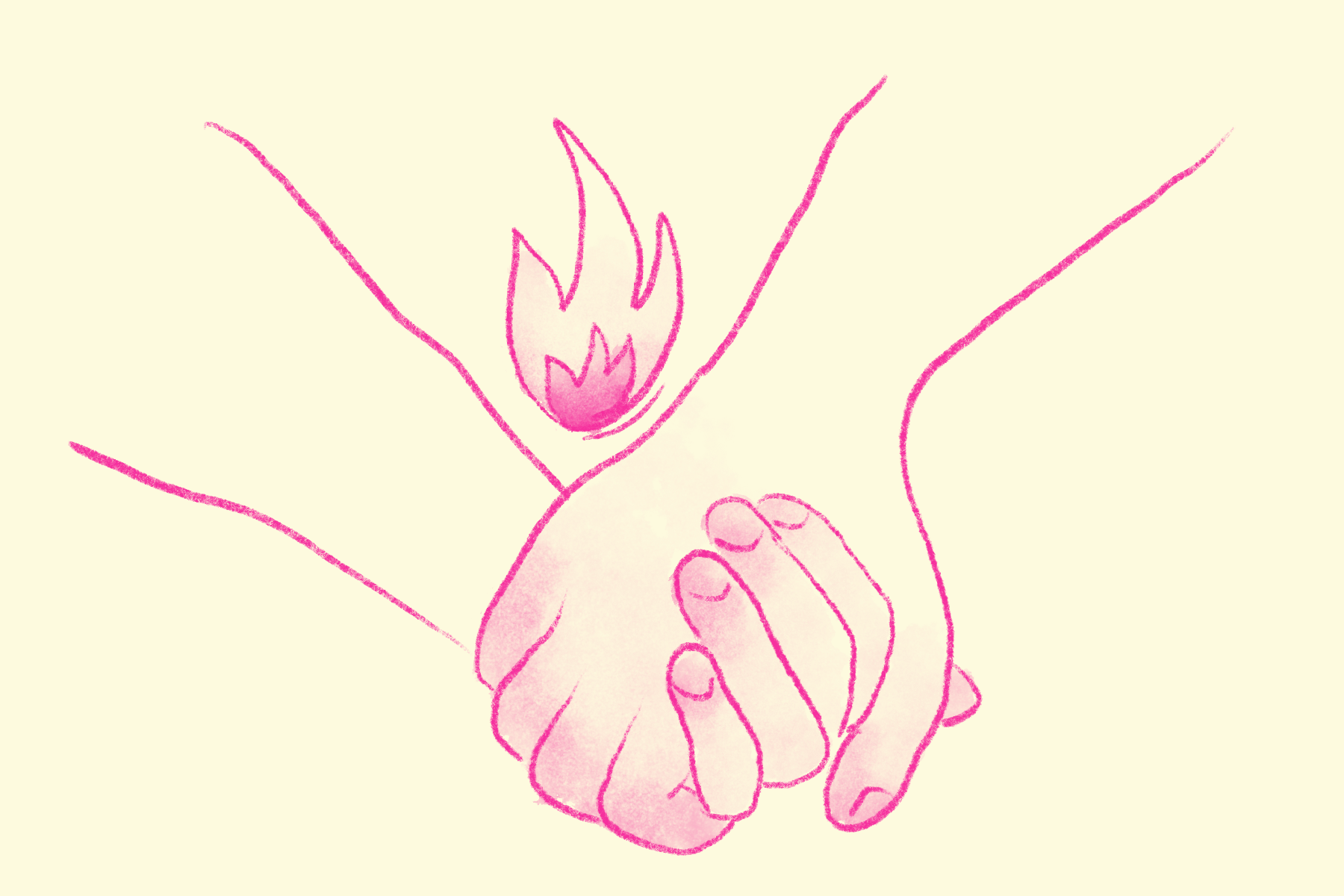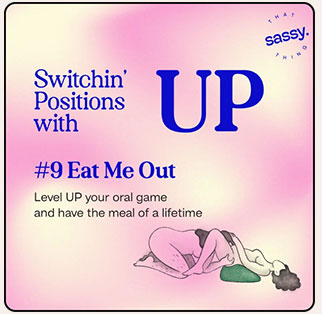Your cart is currently empty

It is tempting to believe in the idea of “the one” being out there. In some ways it can make the search for a partner feel less daunting by adding a spiritual dimension to this journey. It also promises us a bond that is deep and life-changing, encouraging us to hold on to our hopes of meeting this special person. But can relying too heavily on these beliefs make us miss the forest for the trees, and lose sight of the beauty of interactions that may not fit these ideals? In this piece, Aunt Sassy explores what each of these terms–soulmates, twin-flames and pair bonding–mean, and how it might play into our interactions with people. And while we’re talking about the magic of connection, do take a minute to check out our range of Personal massagers, which will help bring you closer to yourself, your lovers, and your orgasms!
The concepts of soulmates, twin-flames, and pair-bonding all revolve around the idea of finding transcendental intimacy with another person. However, they vary in their descriptions of what this intimacy looks and feels like.
1. Soulmates
What it is: Soulmates are often seen as two people who are destined to be together, across time and space. Although often associated with romantic relationships, the idea of soulmates can be applied to other types of relationships, such as friendships, and family.

What it feels like: According to a survey on romantic soulmates, about 61% of people described a soulmate as someone you feel “comfortable” around, and listed the "ability to communicate without speaking" and "physical chemistry" as being important elements in the perfect soulmate. Other attributes that were regarded as important were "aligned goals" and “fewer fights.”
How it can shape our interactions: Since there are various ways the concept of a soulmate can be interpreted, people can incorporate it into their lives how they choose to. However, it may also lead to certain limiting beliefs and actions. For example, in the excitement of finding a soulmate, one may overlook certain red flags. The idea that a soulmate is a connection that exists across lifetimes may also lead one to try to and hold on to a relationship even if it may not age well. It is also important to recognise that relationships can be fulfilling and meaningful even if they don't fit one’s imagination of a soulmate.
2. Twin Flames
What it is: Twin flames are believed to be two halves of the same soul that have split and incarnated into separate physical bodies. These usually refer only to romantic connections, where each partner can have only one other twin.

What it feels like: Meeting one's twin flame is often described as encountering a mirror reflection of oneself. Some people believe this can result in intense emotional experiences. While being on the same wavelength can bring a wonderful sense of recognition and spontaneous attraction, confronting insecurities and vulnerabilities in a partner that one is navigating in their own selves, may be incredibly challenging.
How it can shape our interactions: Because some people believe that interacting with one’s twin flame can bring out their worst fears because they are supposed to make you level up in your own spiritual journey, they might accept harmful behaviours as part of this process. There is also this idea of twin flames being split into the “divine masculine” and “divine feminine”. This reinforces heteronormative stereotypes about men and women being fundamentally different and incomplete without each other. Having only one person that fits the role can also put pressure on individuals to find their twin flame.
Finding one person that fulfils all your desires might be a once in a lifetime event, but finding a toy that does, is so much easier! Check out our Personal Massager, which is intuitive and can bend to cater to all your spots, for those out-of-this-world feels.
3. Pair Bonding
What it is: While soulmates and twin flames are often associated with spiritual or metaphysical connections between people, pair-bonding is a term that comes from the study of evolutionary biology. It refers to the biological and hormonal drive to form a close bond with a partner–a drive which may occur with multiple partners throughout life.

What it feels like: Pair bonding is believed to be driven by the release of hormones such as oxytocin and vasopressin–which are released when you’re getting cosy with your cosmic cuddle companion and promote feelings of attachment. Pair bonding hormones are often strongest in the early stages of a relationship, fostering the honeymoon stage passion. Societal and cultural factors can also play a role in pair bonding, as expectations and norms around relationships can influence how people form and maintain connections with their lovers.
How it can shape our interactions: The science behind pair bonding can help one better understand why they feel the way they feel when they're with boo. However, because it is also rooted in ideas of gender, it can perpetuate gender stereotypes like the idea that women are naturally more nurturing and monogamous while men are more promiscuous.
Don’t close yourself to the range of connections life has to offer as you embark on the search for your perfect matches! Whether you believe in soulmates, twin-flames, or pair-bonding, Aunt Sassy wants to remind you that it is important to be your own person and embrace self-love too. As always, wishing you the best of pleasure!
Do you believe in soulmates? This blog explores the mystical concepts of soulmates, twin flames and pair bonding and how they shape dating and relationships. While you ponder over the possibility of finding your perfect match, check out Aunt Sassy’s exciting range of Sex toys that are designed for perfect compatibility with your coochie!
Even if you haven't found your soulmate yet, remember that you can still experience immense pleasure and fulfilment through self-love. Embracing self-pleasure is an essential part of exploring your desires and understanding your own body. For more insights into self-pleasure and masturbation, be sure to check out our blog on what is masturbation
About the Author

Anna (she/they) is queer and neurodivergent. They have always been curious about pleasure and conversations around it (and wanted to found a condom company when they were 12, because of Global North misinformed panic that the climate crisis is a consequence of overpopulation–they’ve learnt better now). They wish to contribute to a world where everyone can enjoy access to pleasure, safely and shamelessly.












